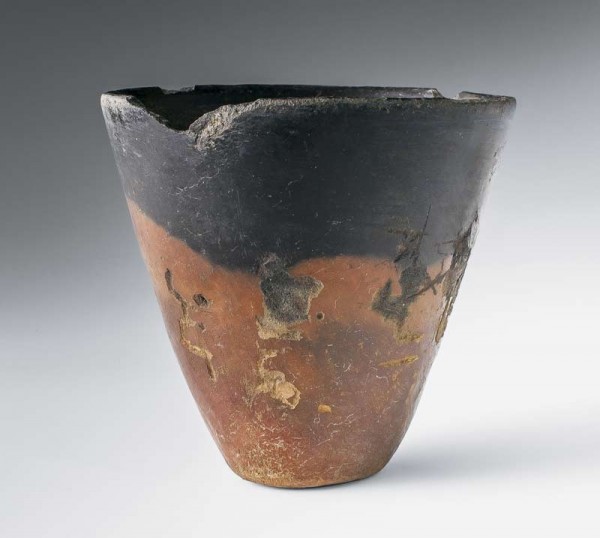
Beaker, Egypt, post-4000 B.C. Earthenware. H. 3 7/8". (All objects from the author’s collection unless otherwise noted; photo, Robert Hunter.) The decoration is the result of both oxidization and reduction in the firing. The incised graffito is of Coptic origin, ca. 500 B.C.
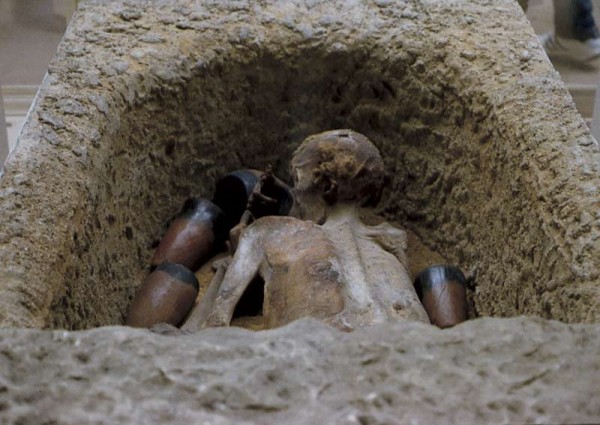
Naturally mummified adult male, alongside Badarian-style beakers, reputedly Gebelein, Egypt, Predynastic period, ca. 3500 B.C. L. 64 1/8". (© Trustees of the British Museum.) The mummy is often referred to by the name Ginger, referencing the tufts of ginger-colored hair on its scalp.
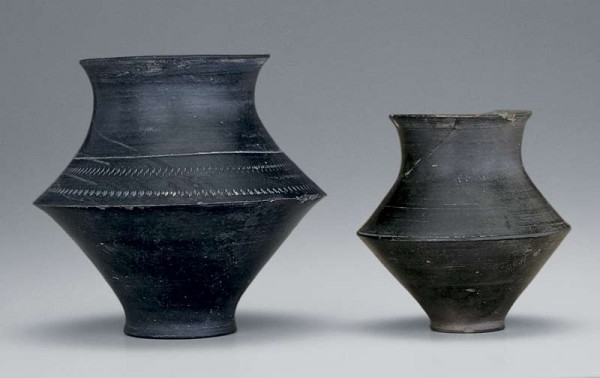
Beakers, Upchurch, England, 1st century A.D. Burnished gray-bodied earthenware. H. 6 5/8" (left) and 5" (right). (Photo, Gavin Ashworth.) These “Upchurch ware” vessels were recovered together from the Medway Marshes.

Untitled engraving, England, ca. 1870. Local antiquaries sent servants into the mud in search of Upchurch pots while they picnicked on the high ground.

Amphora, Roman, 1st century A.D. Unglazed earthenware. H. 38". (Courtesy, Museum of London Archaeology.) The amphora is flanked by a wine jar, both excavated in London in 1950.

Roman amphora and wine jar illustrated in fig. 5 as first uncovered in the 1950 archaeological excavation, after having been smashed during the sacking of Londinium in A.D. 61. (Courtesy, Museum of London Archaeology.)

Dish, attributed to Martin’s Hundred potter Thomas Ward (act. ca. 1620–1635), James City County, Virginia, dated 1631. Slip-decorated earthenware. D. 10 7/8". (Courtesy, Colonial Williamsburg Foundation.)

Fragments of a cup, London, England, ca. 1665. Tin-glazed earthenware. (Photo, Ivor Noël Hume.) The fragments, excavated from a 1666 deposit at the London Sergeants’ Inn, are shown here with a reproduction cup (H. 5") made by potter Michelle Erickson.
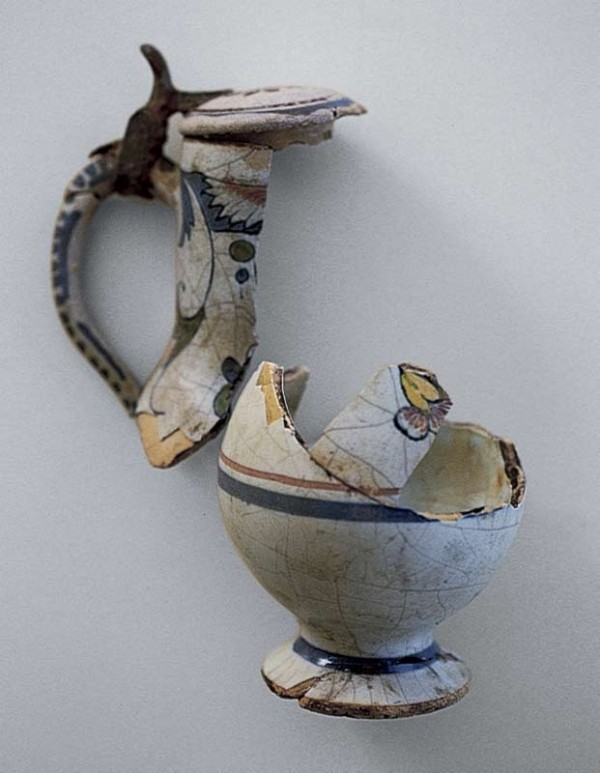
Cruet fragments with pewter thumbpiece, France, ca. 1760. Tin-glazed earthenware. H. approx. 4 1/2". (Courtesy, E. B. Tucker Collection; photo, Ivor Noël Hume.) The fragments were recovered from the ca. 1760 wreck of a French ship off the coast of Bermuda.
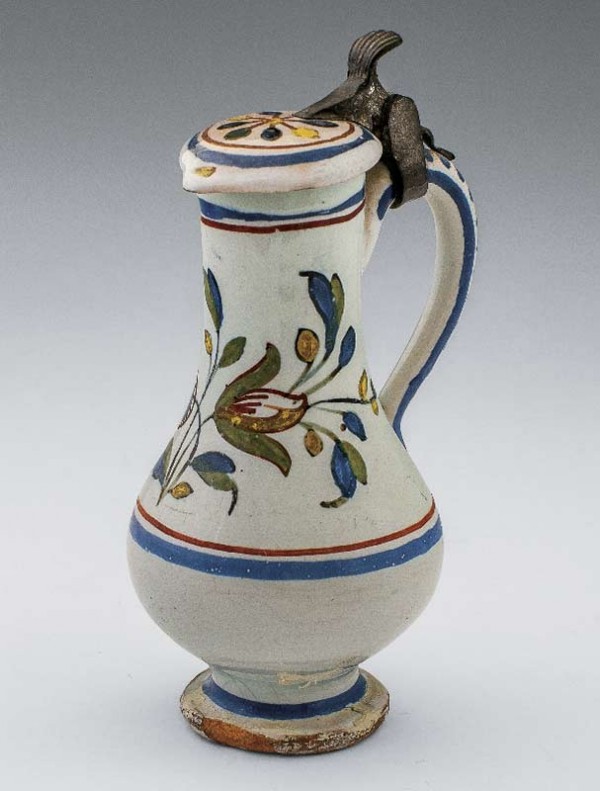
Cruet with pewter thumbpiece, France, ca. 1760. Tin-glazed earthenware. H. 4 1/2". (Photo, Robert Hunter.)
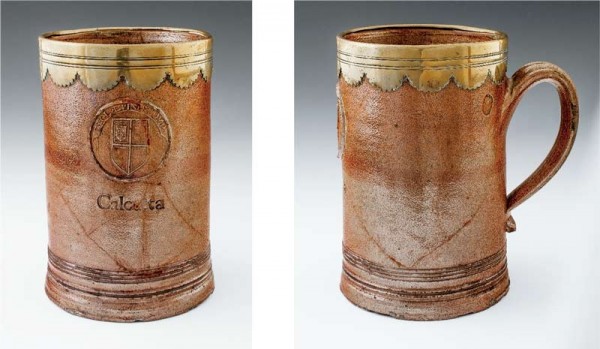
Tankard with original brass mount, England, ca. 1758. Salt-glazed stoneware. H. 8 1/4". Marks: impressed armorial badge of the East India Company; type-impressed “CALCUTTA” (Photos, Robert Hunter.)

Detail of the armorial badge on the tankard illustrated in fig. 11.
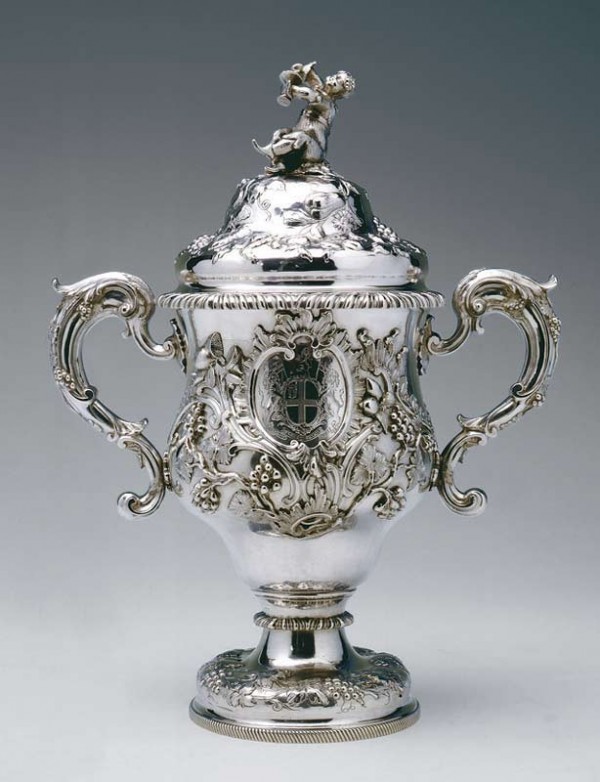
Two-handled cup, William Cripps, London, England, 1761–1762. Silver. H. 18 1/8". (© National Maritime Museum, Greenwich, London.)
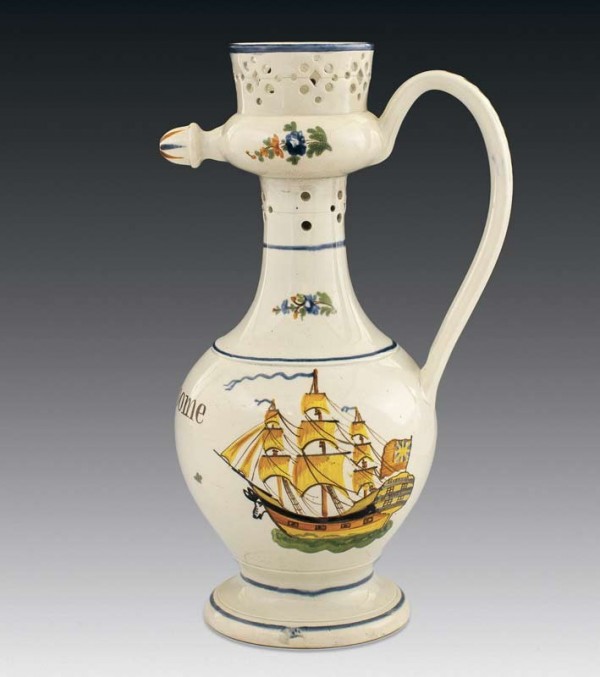
Puzzle jug, probably South Yorkshire, England, ca. 1795. Pearlware. H. 11". (Photo, Robert Hunter.)
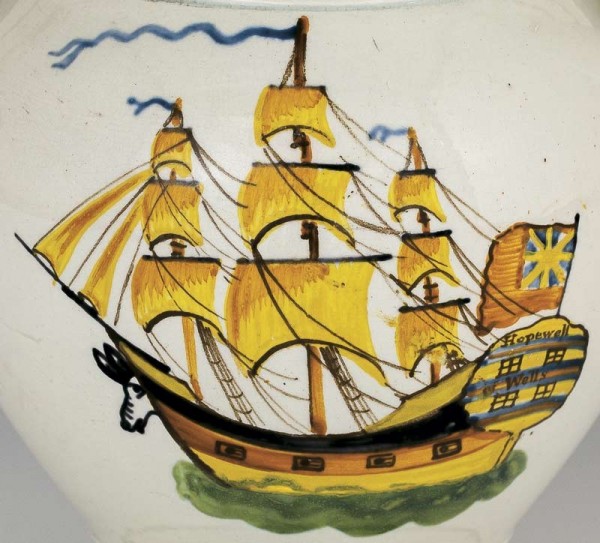
Detail of the ship Hopewell on the puzzle jug illustrated in fig. 14.
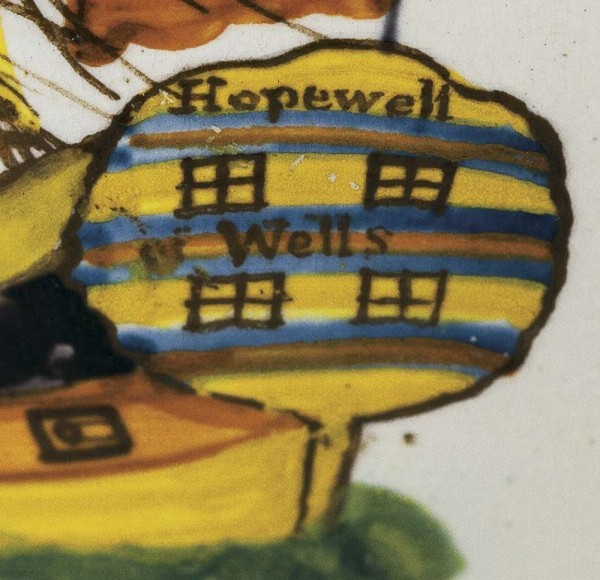
Detail of the stern showing the name Wells and the pierced heart on the puzzle jug illustrated in fig. 14.
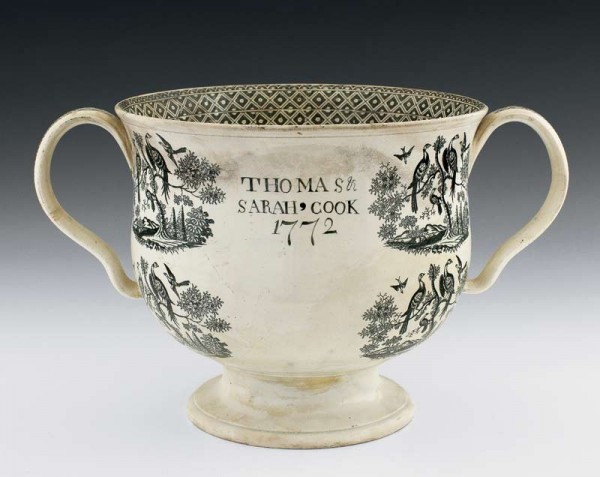
Loving cup, England, ca. 1805. Pearlware. H. 8 5/8". (Photo, Robert Hunter.)
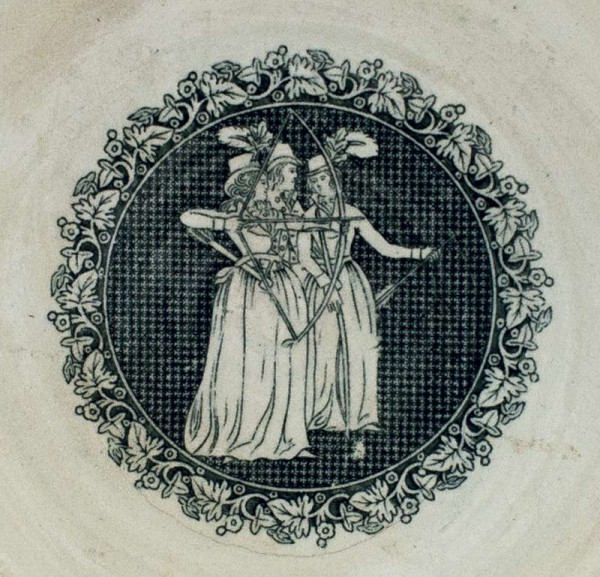
Detail of the central print inside the loving cup illustrated in fig. 17.
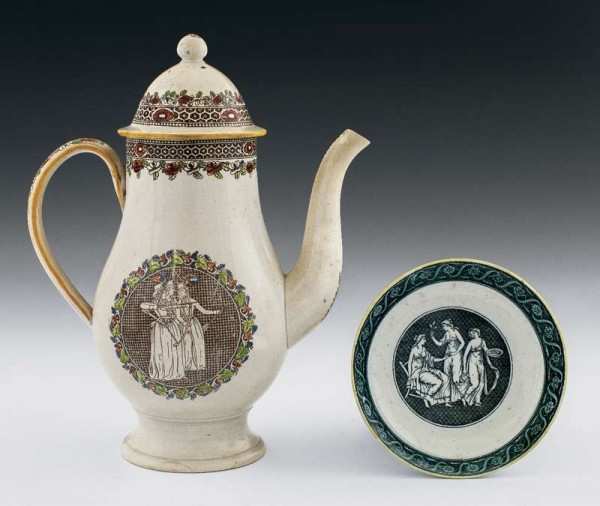
Coffee pot and saucer, Staffordshire, England, ca. 1805–1810. H. of coffee pot 10". (Photo, Robert Hunter.) The coffee pot has the The Archery Lesson print while the saucer design is known as “The Three Graces.”
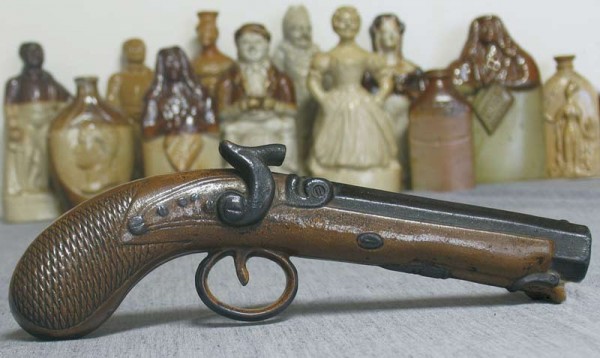
Flask in the shape of a pistol, Joseph Bourne, Denby Pottery, Derbyshire, England, ca. 1845. Salt-glazed stoneware. L. 9 7/8". (Photo, Ivor Noël Hume.)
